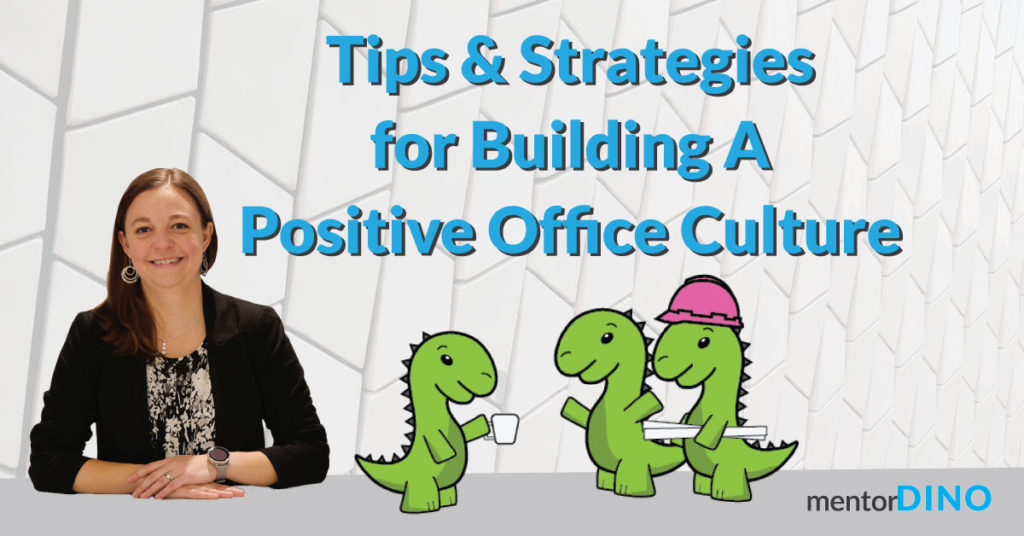In the fields of architecture, design, and engineering, a positive office culture is not optional but required for encouraging creativity and innovation. In this blog post, we’ll discuss the importance of creating a positive work environment and give you practical tips to achieve it. A positive office culture isn’t just about keeping employees happy; it’s about driving productivity, enhancing employee engagement, and boosting overall job satisfaction.
What is Office Culture, and Why Does It Matter?
Office culture encompasses the shared values and behaviors of an organization’s working environment. It sets the tone for how employees interact with each other, with clients, and with the work itself. In the AEC industry, a positive office culture is essential for innovation and collaboration.
A positive office culture isn’t just a nice-to-have; it’s a driver of productivity and job satisfaction. Employees in such environments are more likely to be motivated, engaged, and committed to their work. This translates to better performance, lower turnover rates, and an enhanced reputation in the industry.
Identifying the Current Office Culture
Know Where You Stand Before You Move Forward
Before you can start building a positive office culture, you need to understand your current one. It’s like setting a GPS destination; you can’t reach your goal without knowing your starting point. Start by observing the interactions, behaviors, and dynamics in your workplace. Pay attention to how employees communicate, collaborate, and handle conflicts. Are there any prevalent attitudes or behaviors that need addressing?
Seeking feedback from your employees is equally crucial. Use surveys, anonymous suggestion boxes, or one-on-one discussions to gather their insights. Encourage your employees to share their thoughts on what’s working well and where improvements are needed. This step is critical because it provides the baseline from which you can develop your vision for a better work environment.
Creating a Vision for a Positive Office Culture
Defining Your Values and Mission
To build a positive office culture, you must have a clear vision and mission. Engage your employees in this process to create a shared sense of purpose and direction. Identify the values that your organization wants to uphold and ensure they align with the nature of work in your firm.
Your vision and mission should reflect the uniqueness of your organization and what it stands for in the industry. Are you committed to innovation, sustainability, or client satisfaction? Involve employees in brainstorming and articulating these core values.
By creating an interesting vision, you provide a roadmap for everyone in the organization. This shared sense of purpose fosters unity and a collective commitment to achieving the organization’s goals.
Leadership’s Role in Building a Positive Office Culture
Lead by Example and Support Development
Leaders hold a pivotal role in shaping the office culture. They serve as role models and set the tone for the entire team. If leaders show the values and behaviors they expect from their employees, others are more likely to follow suit.
Transparency and communication are key elements of effective leadership. Leaders should communicate openly and honestly with their teams. They should encourage feedback and be receptive to suggestions for improvement. When employees see their leaders are approachable and willing to listen, it creates an atmosphere of trust and collaboration.
Leaders should support the development of their employees. This includes providing opportunities for training, mentoring, and career growth. When employees feel that their leaders are invested in their professional development, they are more likely to be engaged and committed to the organization.
Encouraging Employee Engagement and Collaboration
Fostering a Sense of Belonging
A positive office culture thrives on employee engagement and collaboration. In the architecture, design, and engineering community, fostering a sense of belonging is crucial for complex projects that require teamwork.
One effective way to encourage engagement is through team-building activities. These activities can range from brainstorming sessions to off-site retreats. They help employees bond, improve their communication, and develop a sense of camaraderie. Team-building also promotes creativity and problem-solving, essential qualities in these industries.
Open communication channels are another vital component of a positive office culture. Establish platforms where employees can freely share their ideas, concerns, and feedback. This can include regular team meetings, suggestion boxes, or digital collaboration tools. When employees know that their voices are heard, they feel valued and are more likely to contribute their best efforts to the organization.
Recognizing and rewarding achievements are equally important. Acknowledge and celebrate the successes of individuals and teams. Whether it’s a project milestone, a creative solution to a problem, or a dedication to client satisfaction, recognition fosters a sense of pride and motivation among employees.
Managing Conflicts and Addressing Negativity
Creating a Safe Space for Resolution
Conflicts and negativity can poison a positive office culture. When disagreements arise, it’s essential to address them promptly and constructively. Creating a safe space for employees to express their concerns and providing conflict resolution support can prevent issues from festering and damaging the work environment.
Conflict resolution techniques can range from one-on-one mediation to team discussions facilitated by a neutral party. The goal is to find mutually acceptable solutions and restore positive working relationships. Addressing toxic behavior, such as bullying or harassment, is non-negotiable. Establish clear policies and procedures for reporting and addressing such issues to maintain a healthy work environment.
Leaders and managers should lead by example of conflict resolution. They should demonstrate effective communication, empathy, and a commitment to resolving issues in a fair and transparent manner.
Promoting Work-Life Balance and Well-being
Prioritizing Employee Well-being
Achieving a positive office culture involves prioritizing the well-being of employees. In the demanding fields of architecture, design, and engineering, where tight deadlines and complex projects can lead to burnout, this is especially crucial.
Offer flexible work arrangements that accommodate the demands of the industry. This can include options for remote work, flexible hours, or compressed workweeks. Flexibility allows employees to better balance their professional and personal lives, reducing stress and improving overall satisfaction.
Implement health and wellness programs that address both physical and mental well-being. These programs can include fitness initiatives, stress management workshops, and access to mental health resources. Encourage employees to take breaks, practice self-care, and seek support when needed.
Evaluating and Evolving the Office Culture
Continuous Improvement is Key
Building a positive office culture is not a onetime effort; it’s an ongoing process. Regularly assess the state of your office culture through feedback from employees and performance metrics. Use this information to make continuous improvements that align with your organization’s goals and values.
Seeking employee feedback is critical in this process. Conduct regular surveys or focus groups to gauge their satisfaction and identify areas for improvement. Act on the feedback received, demonstrating your commitment to creating a positive work environment.
Promote a culture of continuous learning and adaptation. Encourage employees to suggest innovative ideas for improving the workplace culture. When employees help shape the culture, you gain insights and increase their ownership and investment in the organization.
A positive office culture is a cornerstone for success in the architecture, design, and engineering community. By implementing the tips and strategies outlined in this article, organizations can create a supportive and uplifting workplace atmosphere. This not only fosters employee well-being but also enhances productivity and ultimately leads to long-term success. Remember, building a positive office culture is an investment that pays dividends in innovation, collaboration, and overall job satisfaction. In the dynamic and creative world, a positive office culture sets the stage for excellence and innovation to flourish.
Written by
Katelyn Rossier, AIA, NCARB, LSSBB


